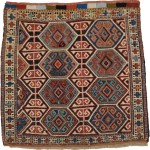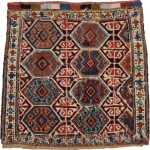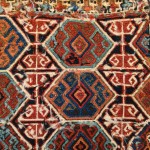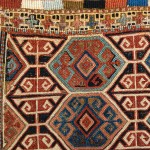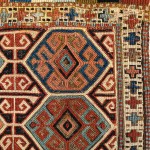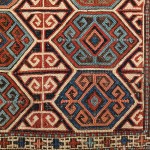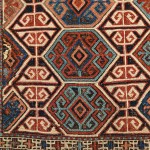Reverse sumak saddlebag face
When this piece first appeared it was thought to be the work of the Shahsavan tribe in northwest Persia. Soon thereafter it was reattributed to the Kurds located in the northeast Persian province of Khorasan, as Wilfried Stanzer published an almost identical saddle bag which had been sourced in that region (Stanzer 1988, p. 181). This Kurdish exclave had relocated from eastern Anatolia in the 16th century and is responsible for the transmission of Turkic motifs in the iconography of the region. My feeling is that both the Stanzer example as well as this one were woven in eastern Anatolia. The rendition of the hooked lozenges contained within the larger hexagons together with that of the cruciform motif in the smaller hexagons, both arranged in parallel and offset rows, are so distinctly Anatolian in character and resemble so clearly the early pile rugs with offset knotting that I personally cannot believe these to be later Persian stylisations. The ivory border also seem to indicate an Anatolian origin, with a quincunxial arrangement typical of early Turkish rugs.
